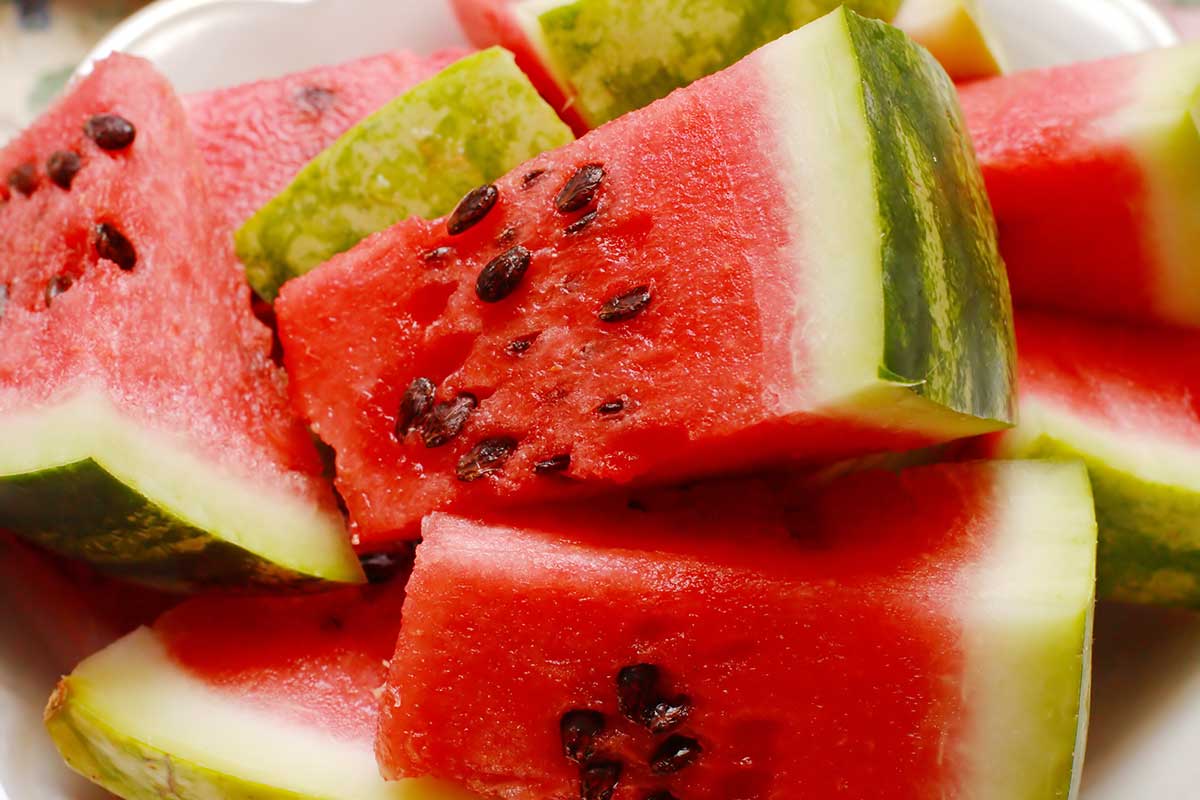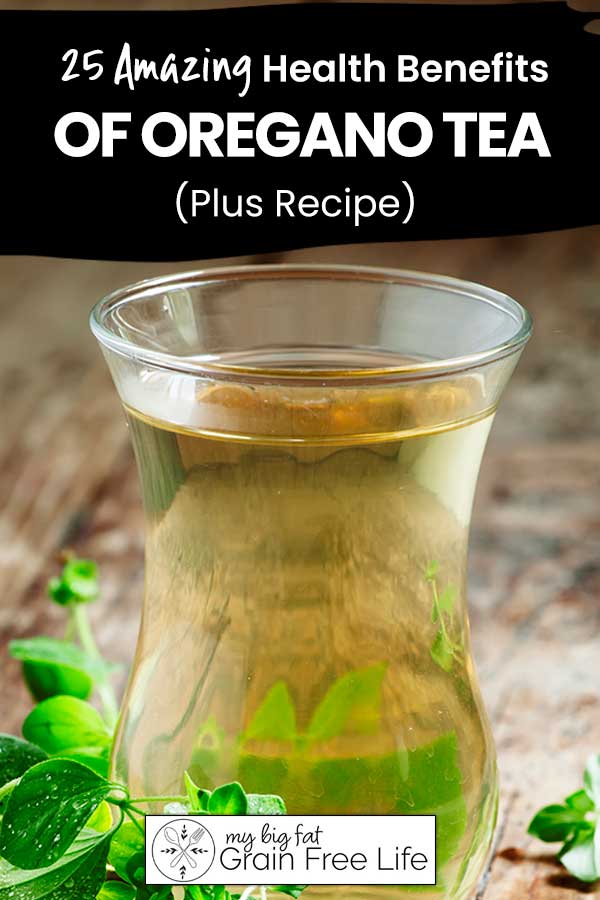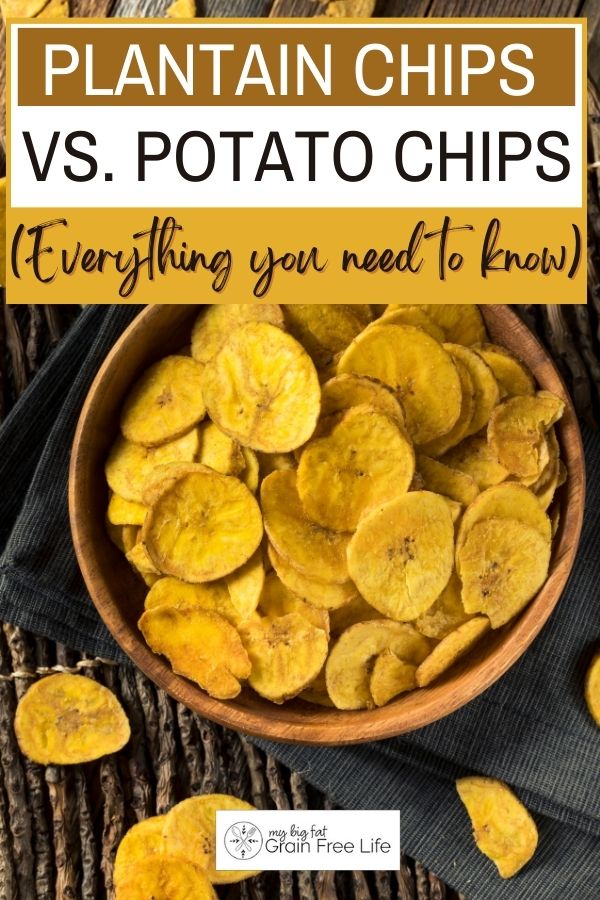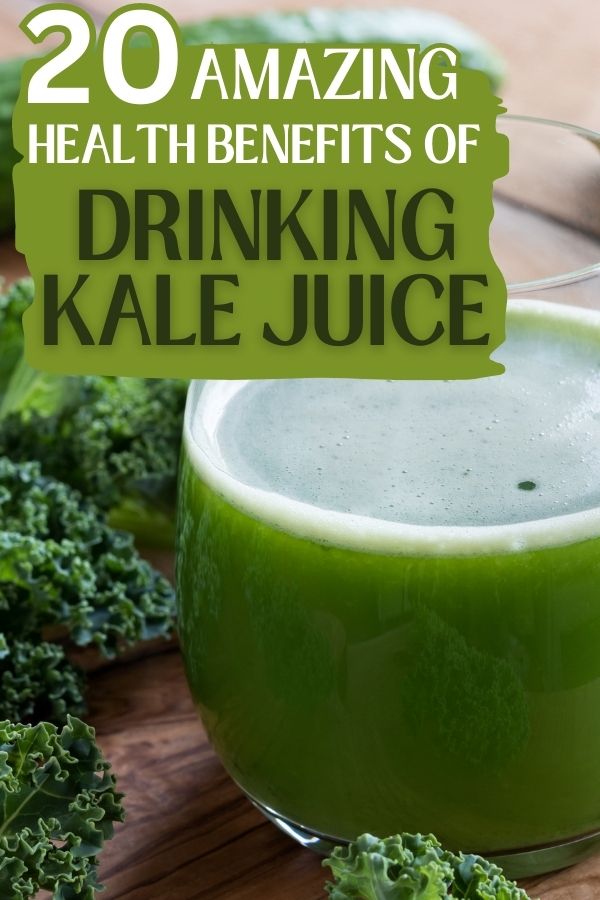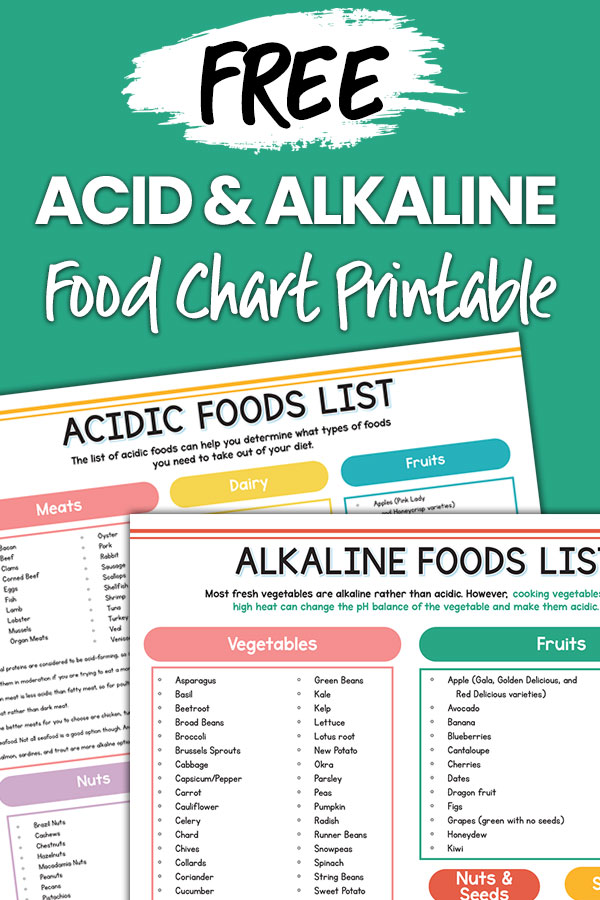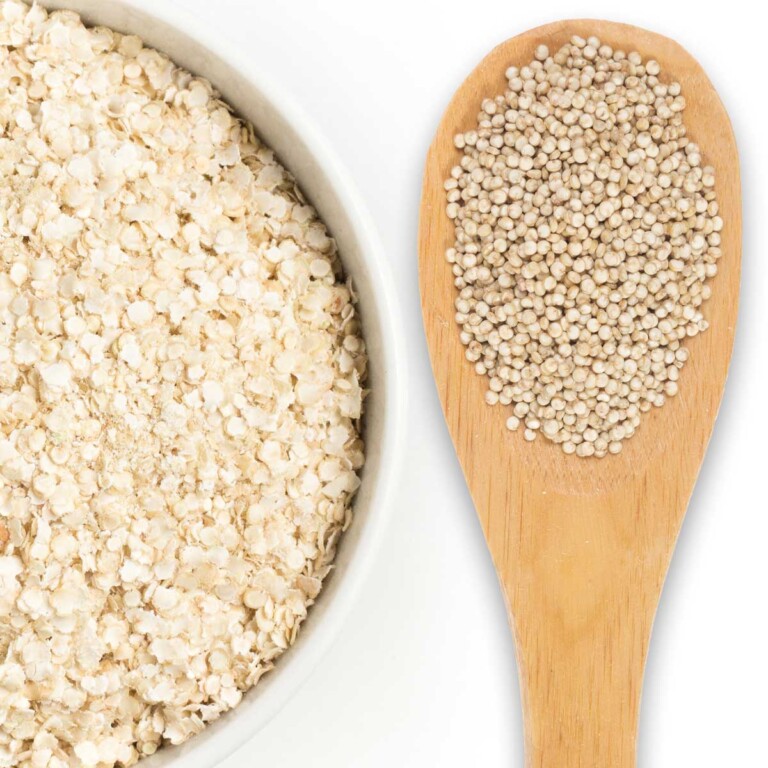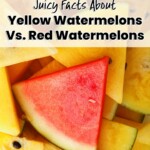Watermelons 101: Juicy Facts About Yellow Vs Red Watermelons
This post may contain affiliate links. If you make purchase after clicking a link, I may receive a commission at no extra cost to you.
Last Updated on January 25, 2024
Discover the juicy facts about yellow watermelon vs red watermelon and learn about the science beind the color and what sets these sweet fruits apart.
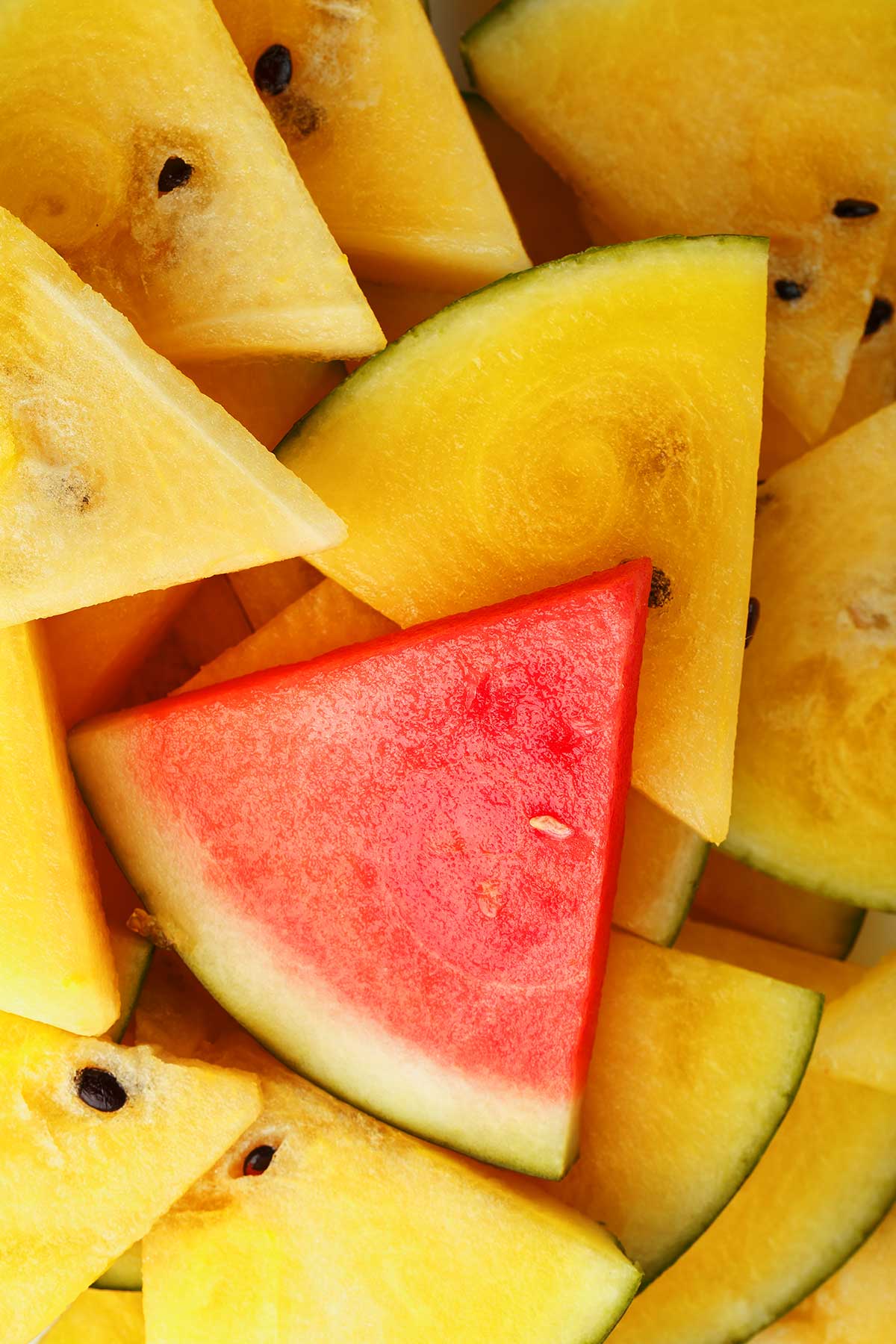
Yellow Watermelon Vs Red Watermelon
This superfood is a popular summer fruit, known for their refreshing taste and high water content. While most people are familiar with the traditional red watermelon, there is also a yellow variety that offers a unique twist on this beloved fruit.
We’re going to take a look at the key differences between yellow vs red watermelons, including their appearance, taste, nutritional content, and benefits.
Yellow Watermelon
Yellow watermelons, as the name suggests, have a yellow flesh. These watermelons are slightly sweeter and milder in taste compared to red watermelons. They are sometimes referred to as sunburst or golden melons due to their sunny coloration.
Originating from Africa, yellow watermelons have been cultivated for centuries. They are a natural mutation of the traditional red watermelon, resulting in a unique and visually appealing fruit.
The yellow flesh is a result of lower levels of lycopene, the pigment responsible for the red color in watermelons. Instead, yellow watermelons contain higher amounts of beta carotene, giving them their sunny hue.

What is a Yellow Watermelon?
A yellow watermelon is a variation of the traditional red watermelon. It belongs to the same species, Citrullus lanatus, but has a different genetic makeup that gives it its unique color and flavor.
What Makes Them Yellow
The yellow color in these watermelons comes from a combination of pigments called carotenoids, specifically beta-carotene.
Beta-carotene is a naturally occurring compound that is responsible for the yellow and orange hues in many fruits and vegetables. In yellow watermelons, the higher concentration of beta-carotene gives the flesh its golden color.
Beta-carotene is converted by the body into vitamin A, which plays a crucial role in various bodily functions. An example would be maintaining the health of your immune cells, helping them function optimally to fight off infections and illnesses.
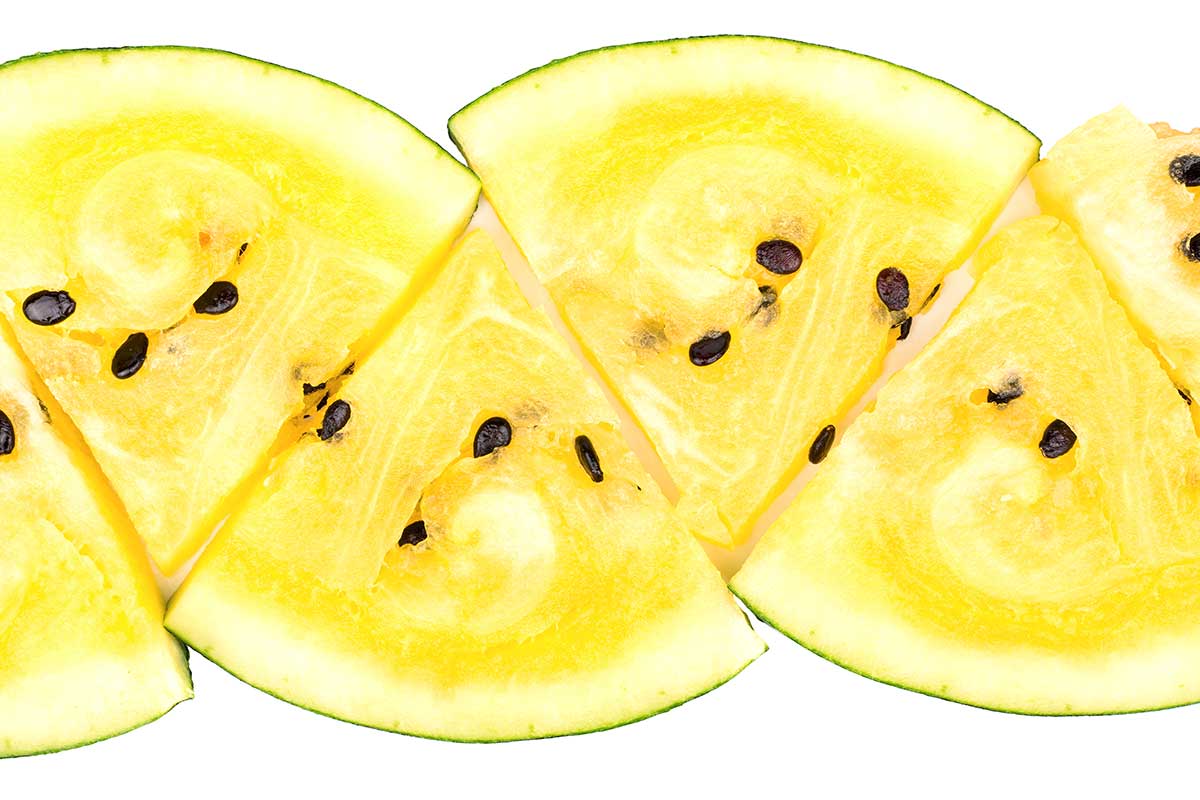
When is Yellow Watermelon in Season?
Yellow watermelons are typically in season during the summer months, just like their red counterparts.
Where to Buy Yellow Watermelon
Many large supermarkets and specialty stores now stock yellow watermelons. I can find yellow watermelon at our local Trader Joe’s in the summer months.
Other Unique Fruits You Might Be Interested In:
- Snake Fruit
- Quince Fruit
- Pineberries
- Calamansi
- Yuzu Fruit
- Clementine vs Mandarin vs Tangerine
- White Apples
- Rambutan
- Red Bananas
- Sapote
Red Watermelon
Now let’s turn our attention to the classic red watermelon, which is undoubtedly the most widely consumed variety. This red, juicy fruit has a refreshing sweet flavor and a bright red or pink flesh.
What Makes Them Red
The red color of these watermelons comes from a pigment called lycopene. Lycopene is a powerful antioxidant that has been linked to numerous health benefits, such as reducing the risk of heart disease and certain cancers.

When Is Red Watermelon in Season?
Similar to yellow watermelons, red watermelons are typically in season during the summer months. This is when they are at their peak freshness and flavor, making it the best time to enjoy them.
The Differences Between Yellow Watermelon vs Red Watermelon
Now that we’ve explored the individual characteristics of yellow and red watermelons, let’s compare them side by side to understand their differences.
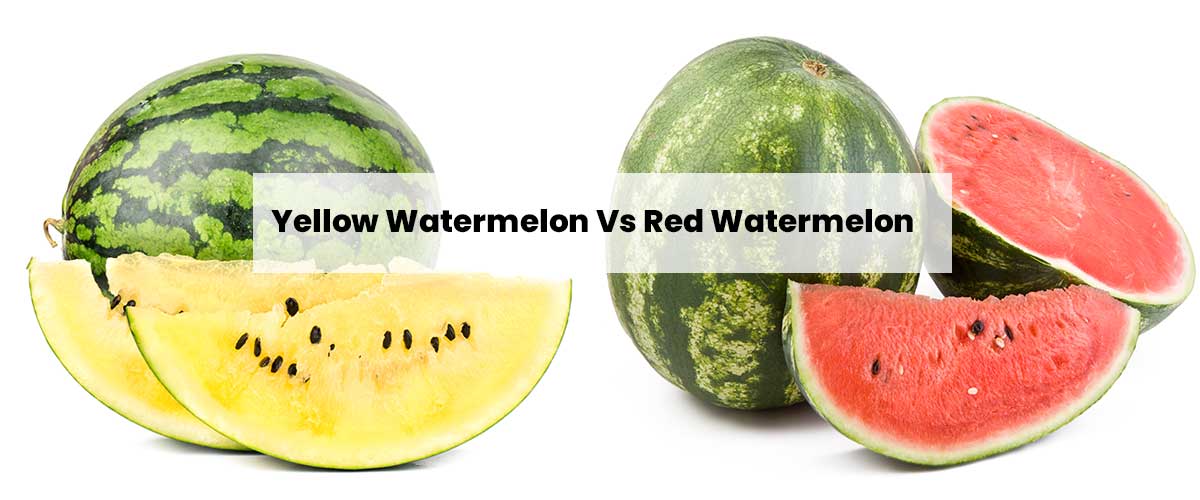
Yellow Watermelon vs Red Watermelon: Flesh Color
The main difference between yellow and red watermelons is the color of their flesh. Yellow watermelons have a yellow hue, while red watermelons have the classic red or pink color.
Yellow Watermelon vs Red Watermelon: Rind Color
In addition to their flesh color, the rind of yellow watermelons is usually a paler, lighter shade of green compared to the darker green rind of red watermelons.
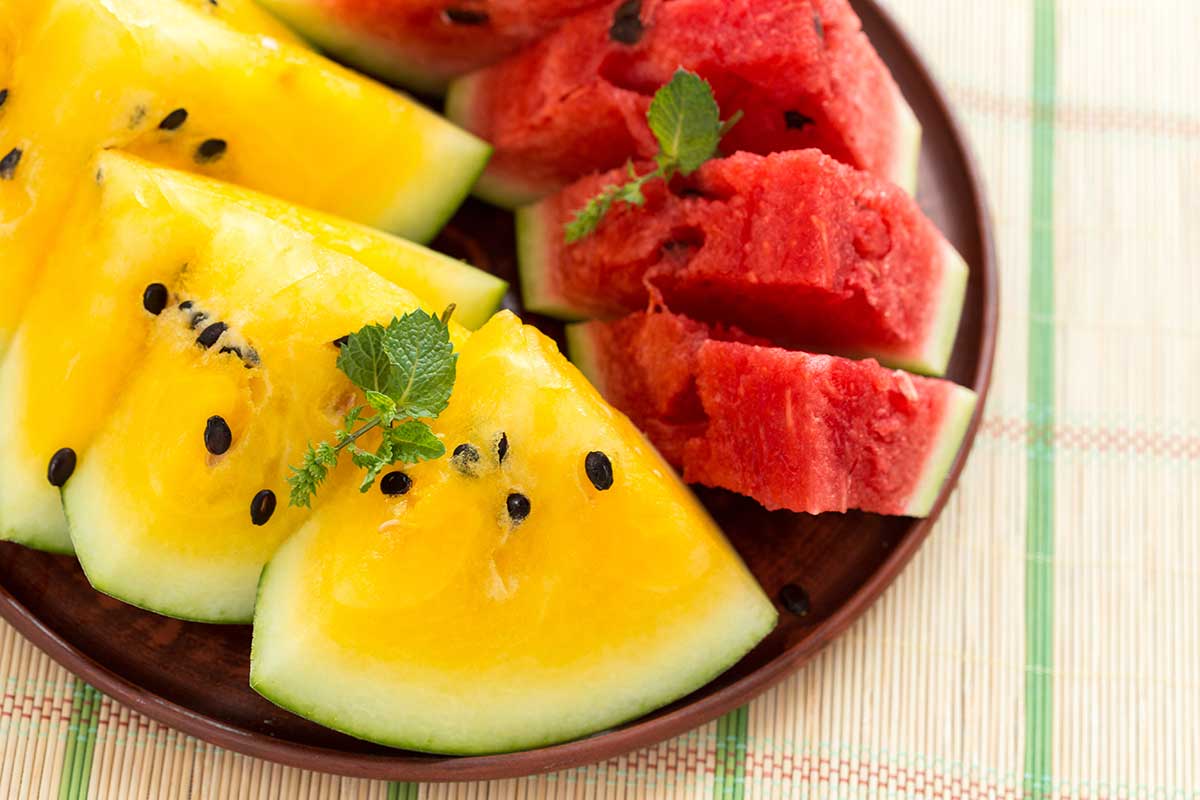
Nutrient Content
While both yellow and red watermelons are packed with vitamins, minerals, and antioxidants, their nutritional profiles differ slightly. Yellow watermelons contain more beta-carotene, while red watermelons are richer in lycopene.
Taste
When it comes to taste, yellow watermelons have a sweeter taste and a honey-like flavor compared to the classic sweet and juicy taste of red watermelons.

Yellow Watermelon vs Red Watermelon: Seeds
Another difference lies in the seeds. Yellow watermelons usually have smaller and fewer seeds compared to red watermelons, which can be a factor to consider depending on your preference.
The presence of black seeds or white seeds in a watermelon variety is primarily determined by genetics. Some watermelon varieties naturally produce predominantly black seeds, while others produce predominantly white seeds. This genetic variation does not affect the taste or quality of the watermelon.
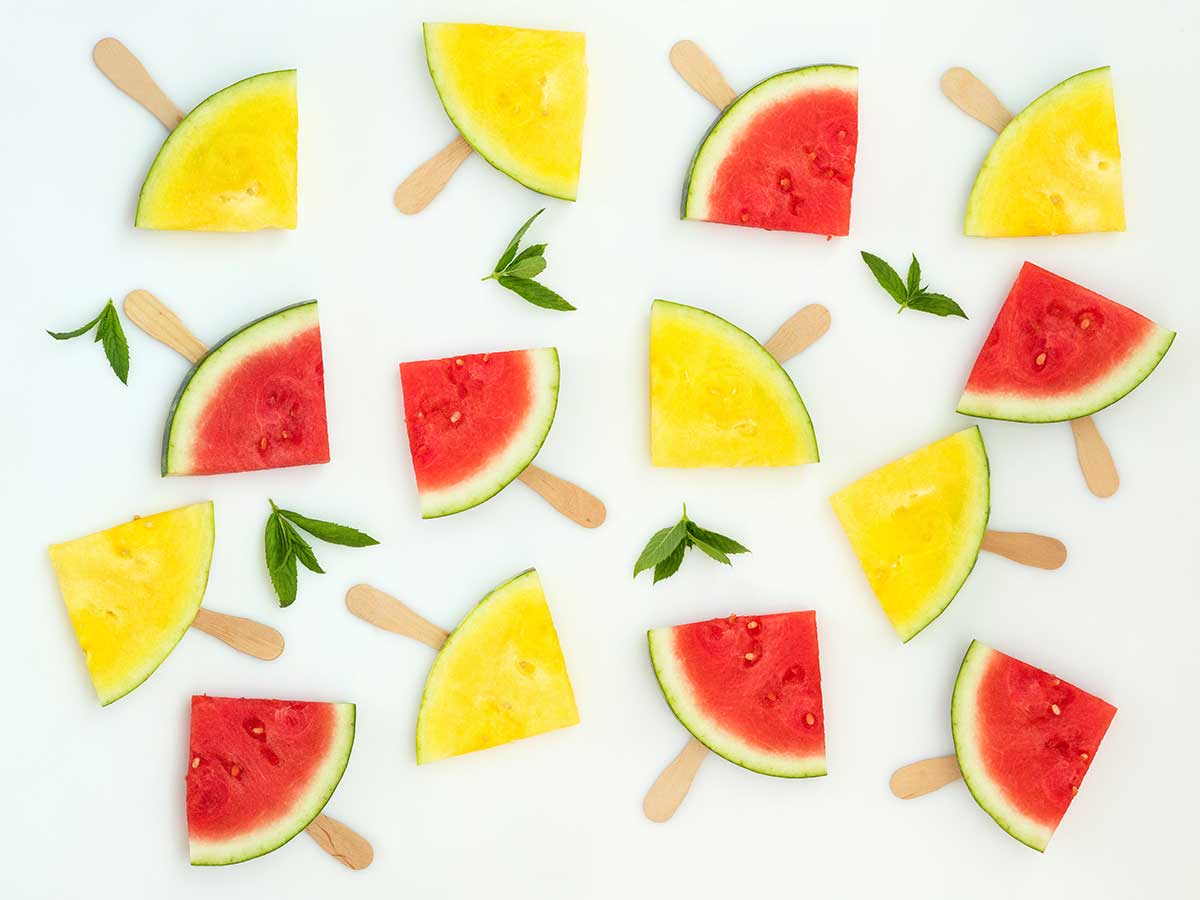
How to Choose a Ripe Watermelon
Regardless of whether you choose a yellow or red watermelon, selecting a ripe one is crucial to ensure the best flavor and texture. Here are a few tips to help you choose a ripe watermelon:
- Look for a symmetrical shape and uniform size.
- Tap the watermelon gently and listen for a deep, hollow sound.
- Check the skin for a dull appearance, indicating ripeness, rather than a glossy finish.
- Press the watermelon gently with your palms – it should feel firm but not too hard or soft.
You Might Also Enjoy: Discover the Surprising Health Benefits of Snake Fruit
When cutting your fruit, don’t toss the watermelon rind! There are many ways to use it and some pretty amazing health benefits.
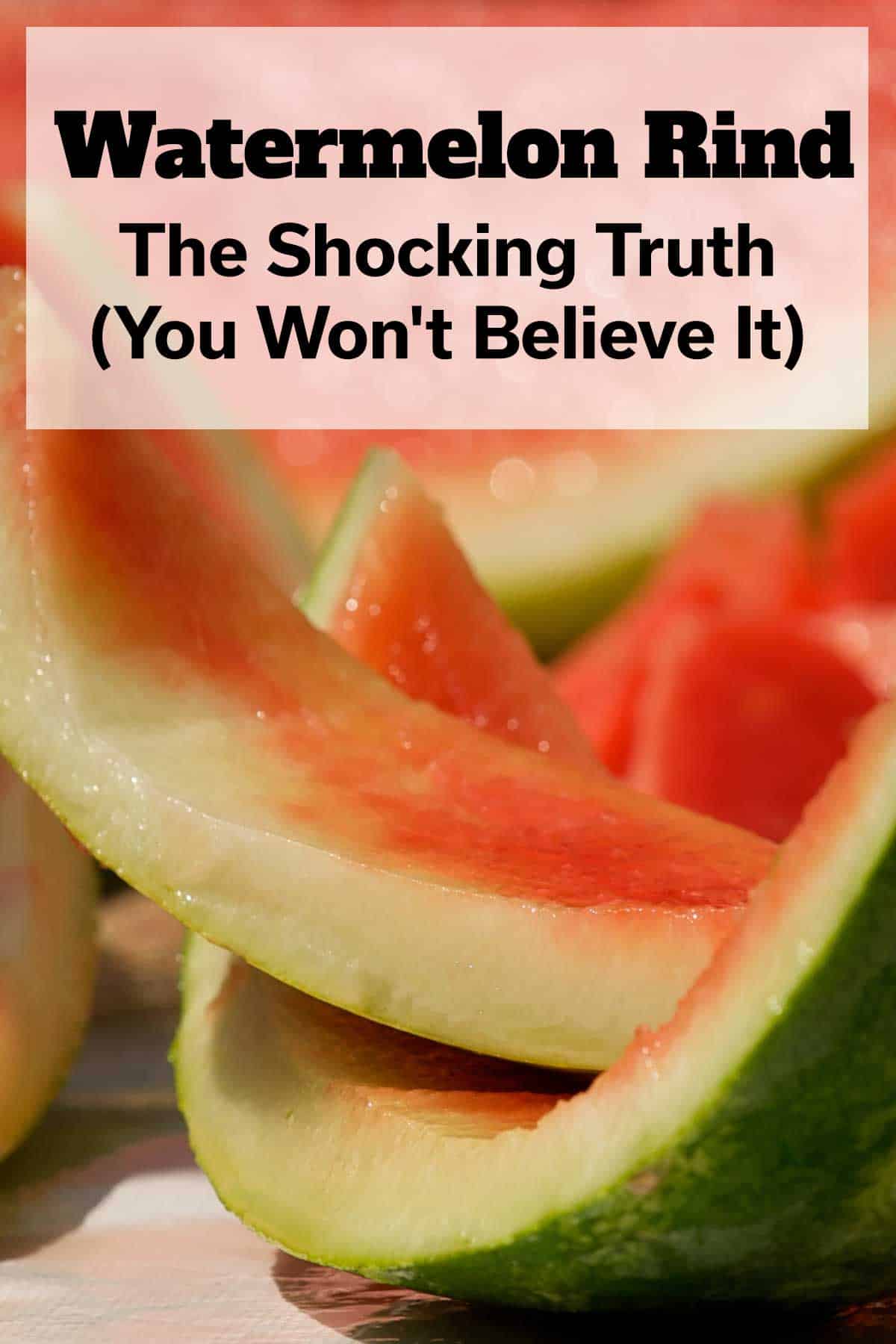
Fun Ways to use Watermelon
Watermelon is not only delicious but can be used in many different ways. Here are some fun ideas to incorporate watermelon into your meals and snacks:
- Watermelon Simple Syrup: To make a refreshing homemade simple syrup using watermelon, blend chunks of watermelon and strain the juice. Combine the juice with a natural sweetener in a saucepan and heat until fully dissolved.
- Eat Watermelon Seeds: Both red and yellow watermelons have seeds that can be enjoyed as a snack or used in recipes. Roast watermelon seeds with some salt for a crunchy and nutritious treat, or add them to salads, granola bars, or trail mix for added texture. Also checkout: health benefits of lemon seeds.
- Pickle the Rind: Don’t throw away the rind; you can pickle it! Cut the rind into small pieces, remove any green skin, and place them in a jar with vinegar, sugar, and spices like cinnamon or cloves. Let it sit in the refrigerator for a few days before using it as a topping for sandwiches or burgers.
- Watermelon Sangria: A refreshing twist on traditional sangria is to use watermelon as one of the main ingredients. You can even use it in a non-alcohol way to make a refreshing summer mocktail! Blend chunks of watermelon with white wine, orange liqueur, lime juice, and fresh mint leaves. Let it chill in the refrigerator for a few hours before serving over ice.
- Watermelon-infused Water: There are a lot of health benfits of infused water! Enhance your hydration by infusing your water with slices of watermelon. Simply add thin slices of watermelon to a pitcher of water and let it sit in the refrigerator overnight for maximum flavor infusion.
- Watermelon Cocktails/Mocktails: Ever had a watermelon margarita? Both red and yellow watermelons can be used to create refreshing cocktails/mocktails. Blend chunks of watermelon with your choice of spirits, such as vodka or rum, and add a splash of lime juice for a zesty kick. For non-alcoholic versions, replace the alcohol with sparkling water or soda.
Other Colors & Varieties of Watermelon
Besides traditional watermelons that are red and the yellow varieties, here are a few different types of watermelon:
- Common Red Watermelon: The most common type of watermelon is the red variety. This traditional red watermelon is a classic choice with its refreshing red flesh and black seeds.
- Yellow Watermelon Varieties: There are several yellow watermelon varieties available, including those with yellow meat and bright yellow melons.
- Buttercup Yellow Melon: This variety of watermelon has a bright yellow flesh and is known for its sweet, juicy taste.
- White Watermelon: This unique variety of watermelon has a pale white or light green flesh, offering a milder flavor compared to other types.
- Orange Watermelons: These watermelons have an orange-colored flesh that is both sweet and flavorful, offering a delightful twist on the traditional red types.
- Pink Watermelons: Some varieties of watermelon have pink flesh that falls between the bright pink and red cousin types.
- Seedless Watermelons: These watermelons have been specially bred to be without seeds, making them convenient and easy to eat.
Final Summary
Yellow and red watermelons may differ in appearance, taste, and nutritional content, but they both offer a delicious and hydrating way to stay refreshed during the hot summer months. Whether or not you prefer seedless varieties, pink watermelons, deep red flesh, or the yellow fruit from varieties of yellow watermelon, this low-calorie snack is loaded with nutritional benefits.
Sources
- https://www.mountsinai.org/health-library/supplement/beta-carotene
- https://www.webmd.com/diet/health-benefits-beta-carotene
- https://www.verywellhealth.com/lycopene-health-benefits-4684446
- https://www.webmd.com/diet/health-benefits-lycopene
- https://agresearchmag.ars.usda.gov/2002/jun/lyco
- https://www.ncbi.nlm.nih.gov/pmc/articles/PMC4464475/
- https://www.ncbi.nlm.nih.gov/pmc/articles/PMC7397335/

